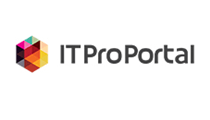
Press Coverage
Media Inquiries Contact:
Jeff Young, Vice President, Corporate Communications
PR@progress.com
Relational Databases ‘Here to Stay’ in the Enterprise Amid Greater Cloud and Data Complexity
Reports of the death of the relational database have been greatly exaggerated – at least in the enterprise.
According to a new study from Progress Software – the company’s latest annual data connectivity report – while the on-premises relational database behemoths of SQL Server, MySQL and Oracle have declined year on year, the cloud push is not yet forthcoming for mission-critical workloads.
Podcast: WCM Market Trends & Predictions With Progress CMO
On this podcast, Laura Myers and I share our thoughts on the WCM market for 2019, the multi-channel customer experience, and why customer relationships are vital to your business's success.
Also joining us in the conversation will be Loren Jarrett, CMO at Progress to share her thoughts on the topics above. I was very fortunate to hear Loren speak this past year at ProgressNEXT 2018 in Boston
From Fast to Faster: Boost Developer Talent with High-Productivity Platforms
Fast is no longer fast enough when it comes to building applications.
Long are the days when developing apps and taking them to market could constitute a lengthy project. Unforgiving market competition and increasing business demands have led the app development lifecycle to shorten dramatically, with apps expected to be market-ready within weeks.
Blazor Now Runs on a Server: What You Should Know
It’s a year or so since Microsoft unveiled Blazor, its tool for running .Net code in the browser. It’s been an eventful year with several releases, each adding more and more code compatibility. Now described as “full-stack web development with C#,” Blazor runs on both clients and servers.
Progress Previews Telerik UI for Blazor
Tooling vendor Progress said developers in the .NET ecosystem asked it to support Microsoft's experimental Blazor project, which it has just done in a new release.
Progress Provides New Support for Vue and .NET Developers Across its Product Line
Progress is updating its web UI toolkit to support the most popular JavaScript frameworks with newly announced extended native support for Vue. Vue joins the product’s existing support for React and Angular.
Progress has announced the release of Progress DataDirect Autonomous REST Connector. The new solution enables teams to build connectors for applications quickly without needing to write custom code. According to Progress, the Data Direct Autonomous REST Connector allows developers to fully access data from SQL-based applications.
Creating Native Mobile Apps Without Writing Native Code
Native programming can strike fear into the heart of anyone that doesn't know how to write it. While we as programmers understand our limits and capabilities, we still like to brag about the complicated function or route we just wrote. But just drop the words "Objective C, or Android Java" into the next conversation you have with fellow programmers and see who starts biting their nails.
Next Generation Low Code Platforms Snub Citizen Developers
As businesses trend more toward buy-not-build solutions, they look to development platforms that can offer frictionless delivery of applications without needing to provide additional training for developers. Therefore, it is important to differentiate between the high-productivity/low-code approaches and the 'citizen developer' approach: one is for dev professionals looking to operate more efficiently, and the other is, essentially, an amateur programmer creating simple applications – not ideal for professional IT delivery.
JavaScript Has Come a Long Way and Shows No Sign of Slowing
Since its release more than 20 years ago, JavaScript has gone through a lot. But even though it has come so far, the language continues to grow and evolve, and interest in using it is still rising. JavaScript is an incredibly approachable language, which probably has something to do with why it has become so popular among developers. Its robust community continues to add to JavaScript’s rich ecosystem of libraries and frameworks.
The Future is Now: Reducing Patient No-Shows with AI and ML
The Mark Twain quip — “Never put off till tomorrow, what you can do the day after tomorrow.” — might be an irreverent, tongue-in-check approach to how some healthcare executives chose to purchase and adopt information technology. For many healthcare executives, the day after tomorrow has arrived.
Thought leaders weigh in on what we can expect from the software development industry in 2019.
Trend-Setting Products in Data and Information Management for 2019
You can call it the new oil, or even the new electricity, but however it is described, it’s clear that data is now recognized as an essential fuel flowing through organizations and enabling never before seen opportunities. However, data cannot simply be collected; it must be handled with care in order to fulfill the promise of faster, smarter decision making.
Building the Predictive Maintenance 4.0 Era with Cognitive-First Models
Predictive maintenance has come a long way since the ’90s. Over the past decade, IIoT and the evolution of analyzing sensor information has pushed organizations to look at new ways to use data to understand machine health.
Microsoft Doubles Down on Open Source .NET
Microsoft is open sourcing some of the most popular Windows-centric .NET Framework components, particularly Windows Presentation Foundation (WPF), Windows Forms and Windows UI XAML Library (WinUI).
Blockchain, Internet Of Things, And Artificial Intelligence Battle Hype At Expo
For those Silicon Valleyites weary of traveling to Las Vegas for re:Invent, Encore Media Group brought its Blockchain Expo/IoT Expo/AI Expo combo conference to Santa Clara this week.
The combination of three of the most hyped topics in technology today provided a rare opportunity to compare the progress vendors have been making cutting through the noise to bring real solutions to the market.
Low-code and Serverless -- Like Fire and Ice?
Demand for enterprise applications is on the rise, with many IT departments staring down the barrel of a massive app backlog that they can’t possibly work through fast enough. And so, the gauntlet has been thrown — IT needs to rethink its approach to app dev to increase the speed of delivery. Enter two unique solutions to this problem: low-code and serverless.
Progress Named a 2018 Gartner Peer Insights Customers’ Choice for Web Content Management
Progress (NASDAQ: PRGS), the leading provider of application development and digital experience technologies, today announced that it has been named a 2018 Gartner Peer Insights Customers’ Choice for Web Content Management (WCM). Gartner Peer Insights Customers’ Choice selections are based on recognitions of vendors submitted by verified end-user professionals. Criteria also considers both the number of reviews and the overall user ratings.
Digital Technologies: Creating New Care Modalities for Diabetes Management
Globally, health systems are facing a triple threat: increasing demands on clinical resources; decreased government spending on healthcare; and a movement toward value-based care. The Darwinian petri dish of economic health policy change will be perceived by some health systems as formidable challenges, but others will embrace these economic health policy shifts as opportunities for reinvention and innovation. In short, those who embrace change, will thrive.
Is the Patient In? Using Automated, Mobile Apps to Reduce Patient No-Shows
Even with advances in IT, curbing patient no-shows has amounted to healthcare practitioners being busy doing something, but slightly different than the day before.
It is estimated that in 2015, no-shows, on average, cost a single provider nearly $150,000. When you factor for inflation, that same provider, in 2018, would be losing closer to $160,000 in revenue. Text messages and phone calls are ubiquitous, and mining structured and unstructured data from these patient-provider interactions is rarely seamless. More often than not, it is a costly Sisyphean effort that does not lead to actionable, proactive practice changes that can reduce patient no-shows.













